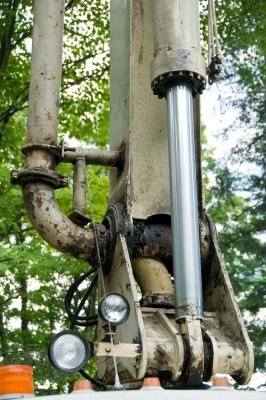Tuesday, January 28, 2014
Highlights in the History of Hydraulics

Hydraulic power relies on the capacity of liquid to provide the power necessary to accomplish mechanical tasks. Hydraulic power is used today in a huge variety of machines, ranging from the heavy equipment used for mining and excavation to basically every car on the road. Pressure applied to fluid inside a closed system provides power that can be harnessed in a variety of ways.
Pascal
Understanding of hydraulic power existed well before French mathematician and physicist Blaise Pascals time. Pascal however, crystallized an understanding of hydraulic pressure that would pave the way for future inventions utilizing this force. Pascals Principle states that "pressure exerted on a fluid is distributed equally throughout the fluid." This means that because fluid does not compress, when you put pressure on fluid at one side of a closed system, it exerts that amount of force on the other side of the system.
Fordson Tractor
Hydraulics in the automotive industry started to take shape when a hydraulic system was first adapted for use in agricultural equipment. Automotive pioneer Henry Ford worked with Harry Ferguson to build the Fordson tractor, which was the first to utilize a hydraulic press. This machine used hydraulic power to lower and lift the various implement attachments that could be used with it. It was the smoothest and most efficient manner of moving heavy equipment on the tractor that had been developed to that point.
Brakes
One of the primary uses of hydraulic technology in cars today is in the braking system. The method of using pressurized brake fluid in a master cylinder to apply stopping power to the wheels was fully realized in America for the first time in 1922. The Duesenberg became the first car in the country to have hydraulic braking power for all four wheels. This technology has been adapted and advanced since then, but automotive brakes still rely on it.
Power Steering
Power steering is the other very important use of hydraulics in the automotive world, and the use of power steering makes it possible to maneuver everything from cars to large military equipment with much more ease. Francis W. Davis was the first to create a hydraulic power steering system in the 1920s. Hydraulic power steering systems started appearing more and more on commercial cars in the 1950s and 1960s.
No comments:
Post a Comment